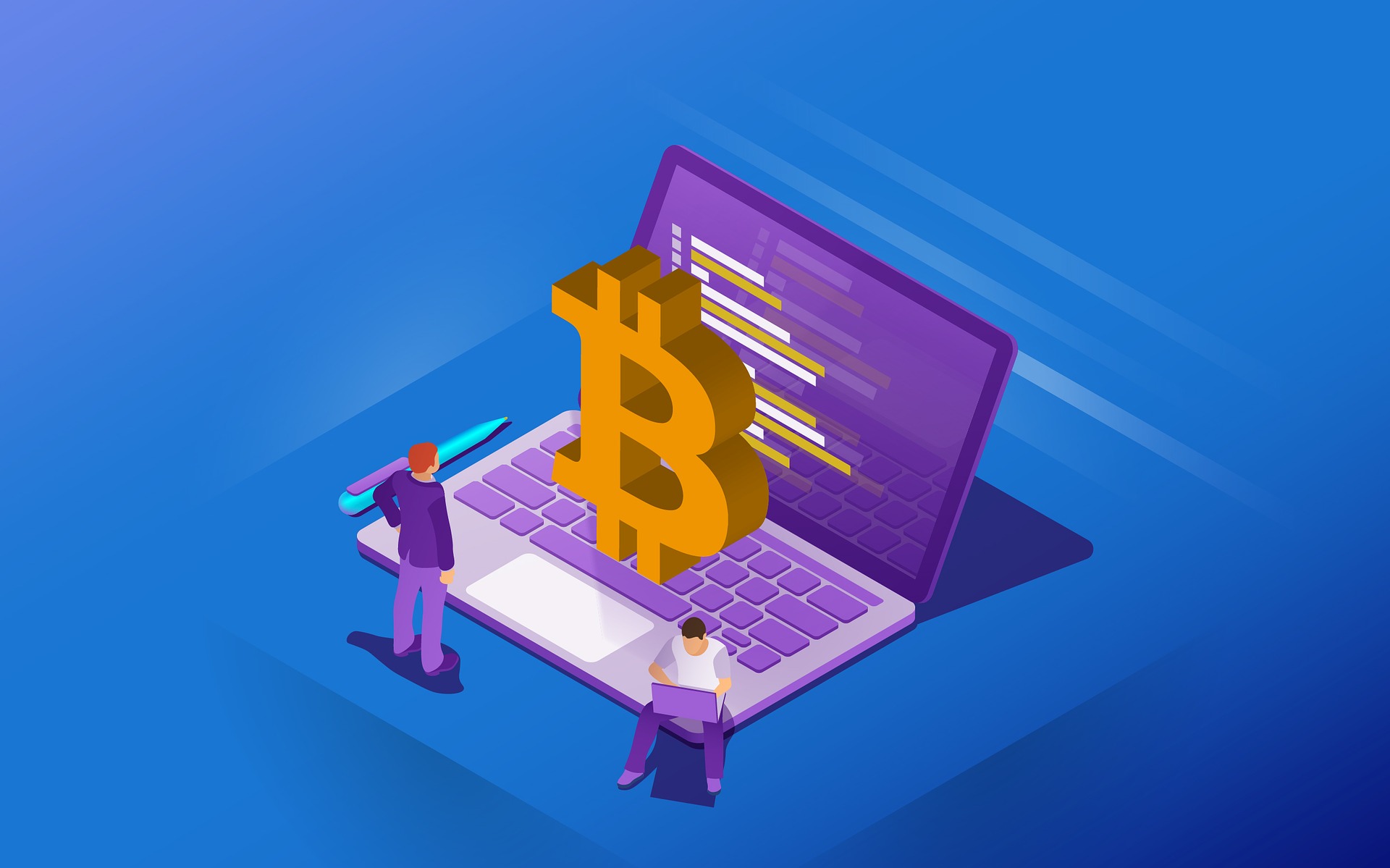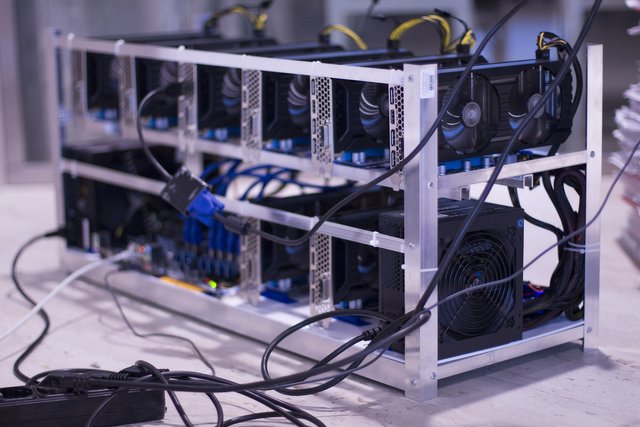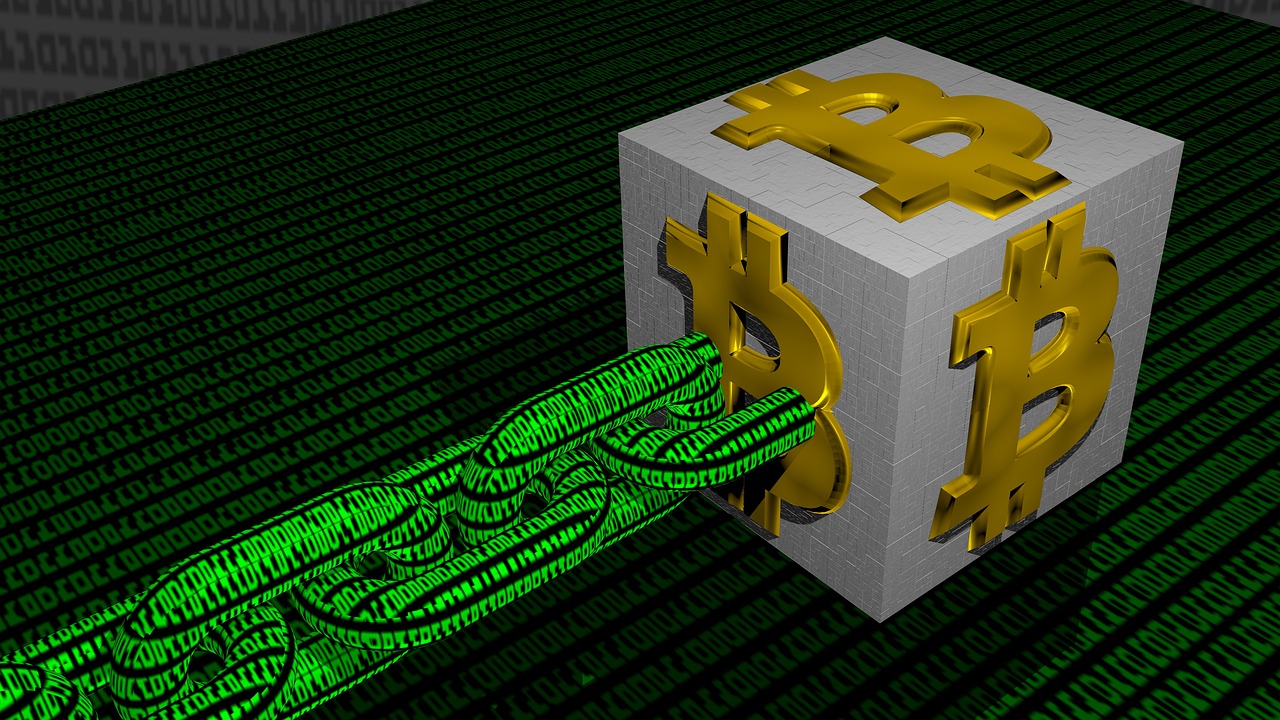The mining criptomonedas is the activity by which new criptoactivos and confirm transactions are issued in a blockchain network. How to do it depends on the algorithm that uses the distributed network to reach consensus: Test Work ( Proof-of-Work, PoW ), proof of participation ( Proof-of-Stake, PoS ) or other. The Work Test is the most used system currently, it can be found in cryptocurrencies such as Bitcoin, Ethereum, Litecoin, Monero, Zcash and others. The Participation Test is usually achieved in combination with PoW in cryptoactives such as Decred, Dash or NEM and exclusively in Stratis or Lisk.

PROOF OF WORK (PROOF-OF-WORK)
In the Work Test System (PoW) , miners use computers with powerful processors (commercial or specialized) to solve hash riddles that, once solved, allow them to propose the next block of transactions to add in the chain of blocks and collect the reward for it, valued in cryptocurrencies.
The rewards for mining are composed of issuance of new currencies plus commissions for transactions included in the block and vary according to the monetary system of the network in which it works. For example, Bitcoin started with a reward of 50 new BTC per block every 10 minutes, approximately. Currently the reward of that network is at 12.5 BTC and will be reduced by half in the years to come. The same happens in Ethereum, where the network rewarded the miners with 5 ETH initially and currently does it with 3 ETH.

In the mining activity, computer processor chips (CPU), video cards (GPU), programmable chips (FPGA) and, in some blockchains, specialized ASIC chips (from English, Integrated Circuits of Specific Application) are used. The chip to be used depends both on the cryptocurrency algorithm and on the current processing power of the entire blockchain network, which translates into the difficulty of mining , a variable that determines the complexity of the hash puzzle to be solved. Blockchains like Bitcoin, Litecoin or Dash are mined with ASIC equipment, in others like Ethereum or Zcash computers with several video cards are used ( here an article on how to configure this type of equipment ) and some like Monero or Bytecoin are mined with CPU.
Except for those cases strictly excluding by algorithm, any cryptocurrency can be mined with any type of processor, for example, Bitcoin can be mined with CPU, FPGA or GPU, but only the most powerful processor compatible in that network will generate dividends.
In addition to the equipment, it is necessary to use software that allows to interact with the cryptocurrency network to obtain from the nodes the works of the blocks to be consolidated and to be able to send the solutions and attempts that are made (work tests).
The software to be used varies widely and can be either closed or open code. In ASIC miners, the software comes pre-installed and can only be configured and updated. Computer miners are much more versatile , since they not only allow the owner to install the mining application they want, but also enable the installation of multiple softwares to mine various cryptoactives at the same time. For example, the Claymore miner can be installed to mine in Ethereum or Zcash with the video cards, along with a software to mine Monero with the CPU and a complete SIA node to sell storage. Such configurations, however, require high performance components and good cooling to prevent premature damage.

The miners, be they common computers or ASICs, are powered by a power source of generally 600 to 2,000 watts, preferably in two-phase connection to better balance the load and increase the electrical efficiency. They also require a stable and constant internet connection, but not necessarily a lot of bandwidth.
PROOF OF PARTICIPATION (PROOF-OF-STAKE)
The Participation Test (PoS) is an alternative consensus algorithm to the PoW in which the participants (nodes) send a special transaction that blocks their funds for a certain period of time and allows them to enter the process of creation and validation of blocks . Depending on the type of algorithm, the network randomly defines the participant who can propose the next block to be added to the chain or the participant in each round of a longer decision process in which the other participants of the network vote for the block which they consider should be added and the winner is finally added to the chain of blocks, thus reaching consensus.
Example of the use of this algorithm is in the Decred cryptocurrency. In this, the participants block funds in DCR in exchange for a ticket that allows them to cast a vote; activity known as staking (betting). When the ticket is randomly selected by the network to vote, the user gets a small reward plus the purchase value of his ticket . In each block, five of these tickets are randomly selected to vote on the validity of the newly mined block. If the ticket portfolio chosen in the round is not online, the ticket is given as lost and the user does not get a reward; reason for which participation groups ( staking pool ) are used, similar to work test mining groups.
Another example of participation test is found in Lisk , in which the number of complete nodes that can participate in the creation and validation of blocks, called forging , is fixed (101 delegates). In this scheme, any user can be delegated, but only those who have more votes, which are obtained from other users, participate in the current round. Unlike Decred, in Lisk you can vote directly with the cryptocoins that are held in a portfolio, being 1 LSK equivalent to 1 vote.
In addition to making money by staking or forging, the participation test defines a governance model for blockchain networks. The users who do this activity have the possibility to vote for the suggested changes to be added to the protocol, thus being able to prioritize those that directly impact on improving the performance of the network.

The first cryptocurrency to use this algorithm is Peercoin, which uses a hybrid between PoW and PoS. Other cryptocurrencies are: Decred, Lisk, Qubits, Novacoin, Diamond, Nxt and many others. In addition, Ethereum plans to make a change from PoW to PoS in the future.
MINING GROUPS ( MINING POOLS )
The groups are a way in which the miners, whether in proof of work (mining group or mining pools ) or participation ( participation group or staking ), work together to increase efficiency and convenience, while dividing the rewards. In the case of the work test , the miners pool their resources and share their computing power while distributing the reward according to the amount of work with which they contributed in the generation of a block; In the participation test , the participants delegate their power of decision to another who runs a complete node and thus avoid doing them and lose rewards.
Group mining began for the first time when the difficulty of mining in the Bitcoin network increased to the point where it could take years for the slowest miners to generate a block. The miners' solution to this problem was to pool their resources so they could generate blocks faster and thus receive a portion of the Bitcoin reward block on a constant basis, rather than at random once every few years.
The mining group works together to get the same block, using as a recipient of the reward the cryptocurrency address of the manager or operator of the group (a complete node). The manager is responsible for publishing the blocks to work and then distribute the gains per block achieved (commissions included) to the members, based on the amount of work performed by each, which is proportional to the processing power that each member controls. . By doing this work, the group operator keeps a percentage of the profits, called the group fee (pool fee) . The group fee is usually around 0-4% of the earnings per block.
The operator of the mining group can use different algorithms to post the payment to their workers. The most common are Pay-per-share (PPS) and Pay-per-last-N-shares (PPLNS). In the first, the miners receive a fixed payment for each valid attempt (share) or solution they make, regardless of whether the next block has been obtained or not by the mining group; while in the second the miners get a payment based on the last N valid attempts they make until they get a block, N being a number defined by the operator of the mining group. PPS is one of the algorithms that provides more uniform payments to miners, transferring all risk to the group operator. On the contrary, the payments under PPLNS can vary drastically and depend both on the loyalty of the miner to the pool (connected continuous time), due to the N factor, as well as on the general luck of the group to obtain blocks.
To choose a cryptocurrency mining group, it is important to take into account that: rewards are paid in full per block (new issuance plus commissions) , the pool has a relevant market share and a quota close to zero, the online pool time be close to 100% and the mode of payment is to the user's liking.
Slushpool, the first mining group, was launched on November 27, 2010. Since then it has become a common practice to group mining, almost predominantly over mining alone. Also, it has extended to the mining of many of the best-known cryptocurrencies: Bitcoin, Litecoin, Dash and Ethereum, among others.

Advantage
They reduce the uncertainty of mining a block and with it, the economic risk; they allow small miners to participate profitably and keep the validation software of the miners updated.
Disadvantages
They encourage the centralization of the network, discourage miners from running complete nodes, and make it more cumbersome (in some cases impossible) to exercise the will of the miners to vote on changes in the network.
MINING IN THE CLOUD (CLOUD MINING)
The mining cloud (cloud mining) or hashing cloud allows users to buy hardware mining capacity in remote data centers, for an agreed set time. Actually, it is a rental or lease of computing capacity that prevents the acquisition of hardware and software for mining, power consumption and bandwidth, among other requirements to own a mining center.
The advantages of this mining scheme are related to not having to deal with the disadvantages that the mining equipment generates: heat and excessive noise, installation of ventilation systems, electricity consumption, equipment purchase and repair, etc.
The main disadvantages lie in the high probability of fraud due to not being able to verify the existence or operation of the data center and lower profitability due to the cost of the mining service; in addition, cloud mining contracts contemplate the cessation of operations or payments if the price of the cryptocurrency is too low to cover operating costs, among others.
Currently, there are companies that offer cloud mining services for several of the best known cryptocurrencies: Bitcoin, Litecoin, Dash and Ethereum, among others.
CEXio, the first cloud mining company, was established in October 2013. Today there are many others, the most famous being Genesis Mining .
Due to the high degree of trust that must exist between who contracts the service and who offers it, this system has been used to carry out multiple scams over the years, so caution should be used when investing in mining in Cloud.